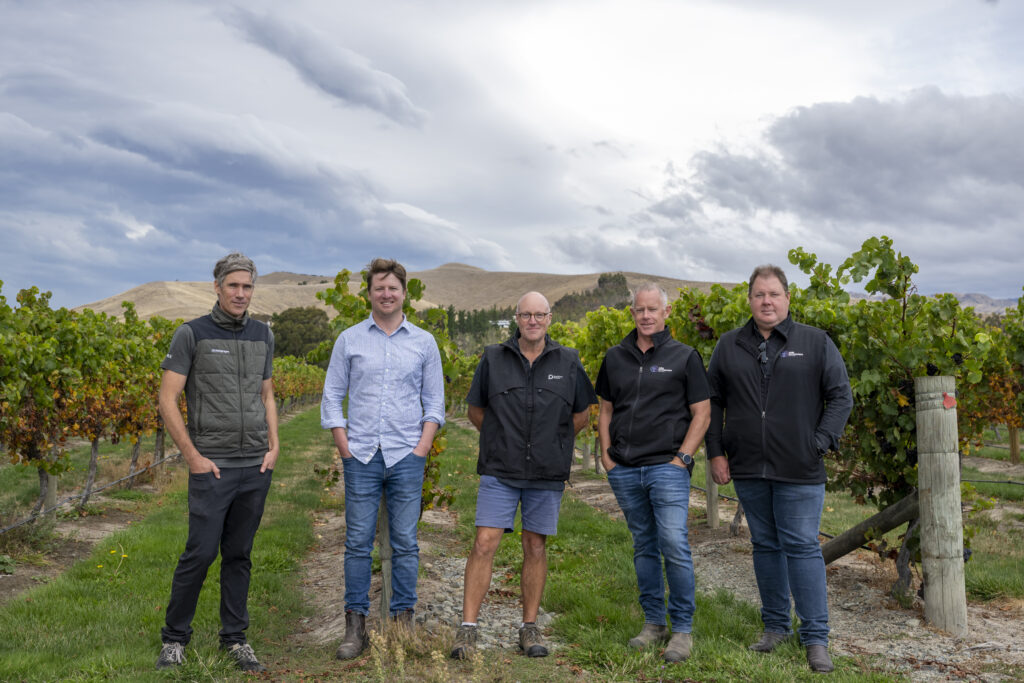Field trials of new disease sensing technology will see a robot deployed on some wineries in Hawke’s Bay and Marlborough this vintage.
Over the past three years scientists at Plant & Food Research have been working with New Zealand agri-tech company Integrape on a disease detection tool known as VinEye.
Plant & Food Research developed the VinEye algorithm, which has learnt through machine learning how to instantly analyse photographs of grapevines and identify vines infected with the costly disease grapevine leafroll disease (GLD).
Having proven the model, the focus has now shifted to deploying the system at scale using autonomous robotic technology and further integrating the VinEye algorithm with the Integrape platform for both reporting and data collection via its Vure scouting app.
During this vintage, the first surveys using robotics are planned on 60 hectares of vineyards in Hawke’s Bay and Marlborough.
Integrape has partnered with agricultural robotics supplier Agri Automation, which will provide a self-driving Burro robot that will be equipped with cameras.
The Burro robot will use high-precision RTK GPS and Vision to move up and down vine rows paths created by Integrape’s vineyard mapping tools, capturing images without human intervention.
The footage collected will then be processed and analysed by another partner on the project, agtech company Bitwise Agronomy.

Bitwise Agronomy will use the VinEye algorithm to process large amounts of raw data. Analysed data will be fed back to Integrape – whose online monitoring tools and reports are used by more than a third of the local wine industry – for interactive visualisation.
GLD is a significant problem for the wine industry worldwide and is estimated to cost tens of millions of dollars in lost productivity in New Zealand alone. GLD is only visually apparent on vines for a short window around harvest time and detection of the disease can be difficult, requiring trained staff to walk rows undertaking assessments.
“GLD causes vines to produce smaller bunches and prolongs the time it takes for grapes to ripen, thus reducing yield and productivity. Detection is challenging as infected vines have distinctive red leaves, which can be confused with other conditions that may not affect the quality of wine or yield,” said Plant & Food Research project leader, plant pathologist Dr Karmun Chooi.
Chooi said the aim of the VinEye technology is to provide a faster, more accurate and more cost- effective alternative to manual detection by skilled professionals.
“We know climate change is anticipated to increase the prevalence of plant health issues, including GLD, so early detection of diseases is expected to become even more critical for industries in the future.”
Integrape founder Joris Besamusca said this year’s survey work, which involves four wineries, will be the most extensive testing that’s been undertaken to date and an important step in bringing the technology to market.
“Partnering with winegrowers, other leading agri-tech companies and Plant & Food Research is providing the opportunity to develop a tool which could be a game-changer for the industry going forward,” Besamusca said.
Bitwise Agronomy’s chief executive and co-founder, Fiona Turner, is excited by the field trials.
“I’m a vineyard owner myself, and lead an agtech company, so I’m always looking for ways to make life easier and more profitable for growers. Bitwise Agronomy specialises in AI and we’re excited to bring our machine learning expertise to process this data.
“Collaborations like this between research and agtech offer high-value to the industry and help find solutions to real-world farming problems.”
Agri Automation managing director Chris Clifford said the project showcases the versatility of the Burro autonomous mobile robot, adding yet another use-case to its established functions such as carrying harvested fruit and produce, towing trailers, mowing and pest deterrence.










